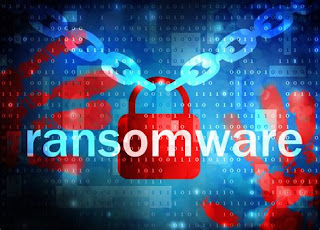The Ruse of Ransomware: A Deceptive Dance of Data and Dollars
Ransomware is a sort of buzzword bounced around when people talk about corporations organizations being hacked. It is also a name that strikes fear into the hearts of individuals and businesses alike. It's a malicious software that slithers into your system, encrypts your precious files, and holds them hostage for a hefty ransom. But beyond the technical jargon lies a web of deceit, a carefully crafted ruse that preys on fear and ignorance. Today, let's peel back the layers of this digital deception and understand how ransomware manipulates us.
The Baits of Deception
Ransomware attacks come in various flavors, each with its own irresistible (or not so irresistible) bait. Phishing emails, disguised as legitimate invoices or urgent messages, can lure you into clicking a malicious link or downloading an infected attachment. Malvertising, hidden within seemingly harmless websites, can inject ransomware onto your device with a single click. Social engineering tactics, like phone calls from fake tech support, can trick you into granting remote access, paving the way for the malware to slither in.
The Stage of Panic
Once the ransomware strikes, the real show begins. A menacing message pops up, informing you of your predicament: your files are locked, encrypted, and inaccessible. The clock starts ticking, a countdown to oblivion, urging you to pay the ransom before your data is lost forever. Panic sets in. Memories of irreplaceable photos, crucial documents, and years of work flash before your eyes. The attackers play on your desperation, exploiting your emotional vulnerability to squeeze out a hefty price.
The Allure of the False Promise
The ransom note usually comes with a glimmer of hope, a promise of decryption upon payment. But this promise is as fragile as a desert mirage. There's no guarantee that paying will get your files back. In fact, security experts strongly advise against feeding into the attacker's greed. Paying only fuels the cybercrime economy and encourages further attacks.
Unmasking the Ruse
So, how do we unmask this elaborate ruse? Awareness is key. By educating ourselves about the different types of ransomware attacks and their tactics, we can develop a healthy dose of skepticism. Remember, if something seems too urgent, too good to be true, or triggers a sense of panic, it probably is.
Here are some additional tips to stay safe:
Regularly back up your data: Having a recent backup ensures you have a safety net in case of an attack.
Keep your software updated: Outdated software often contains vulnerabilities that ransomware exploits.
Be cautious with emails and attachments: Don't click on suspicious links or download unknown attachments.
Think before you click: Hover over links to see their true destination before clicking.
Install anti-virus and anti-malware software: These tools can help detect and prevent ransomware attacks.
By staying informed and vigilant, we can demystify the ruse of ransomware and protect ourselves from this digital predator. Remember, knowledge is power, and in the cybersecurity realm, it's the ultimate weapon against deception.
Stay safe out there!
I hope this blog post has been informative and helpful. If you have any questions, please feel free to leave a comment below.





Comments